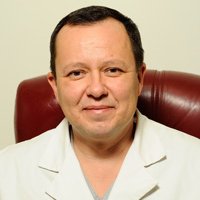Short term effectiveness of extra corporeal shock wave therapy for plantar fasciitis: A systematic review and meta-analysis
Published on: 30th July, 2020
OCLC Number/Unique Identifier: 8644439951
Background: The argument on whether extracorporeal shock-wave therapy (ESWT) is beneficial in short- term intervention in adults with plantar fasciitis. It is important and necessary to conduct a meta-analysis to make a comparatively more reliable and overall assessment of the outcomes of ESWT in the less than 6 months.
Methods: We conducted a systematic review and meta-analysis of randomized control trials from MEDLINE, EMBASE and CINAHL databases from 2000 to 2020. Randomized trials that evaluated extracorporeal shock wave therapy used to treat plantar heel pain were included. Trials comparing an extra corporeal shock wave therapy with control/placebo were considered for inclusion in the review. We independently applied the inclusion and exclusion criteria to each identified randomized controlled trial, extracted data and assessed the methodological quality of each trial.
Results: Four studies involving 645 patients were included. 3 RCTs (n = 605) permitted a pooled estimate of effectiveness based on overall success rate and composite score of visual analogue scales for pain at follow-up 1 (12 weeks). The pooled data showed no significant heterogeneity at the three-month follow-up (p - value of chi-square = 0.61, p = 0.74 and I2 = 0%). The shock wave group had a better success rate than the control group at the three-month follow-up (OR = 2.26, 95% CI = 1.62-3.15, p - < 0.00001). For reduction of pain the pooled data showed no significant heterogeneity (p - value of chi-Square 0.28 and I2 22%). There were significant differences between the ESWT and control groups for all follow-up visits (random-effect model, three trials, MD = 15.14, 95% CI = 13.86 to 16.42, < 0.00001 at three-month).
Conclusion: A meta-analysis of data from three randomized-controlled trials that included a total of 605 patients was statistically significant in favor of extracorporeal shock wave therapy at follow-up 1(12 weeks).
Chronic Pancreatitis with Stones: What is the Best Way to Treat?
Published on: 16th June, 2025
Pancreatic duct stones (PDS) are a common complication of chronic pancreatitis (CP). PDS can lead to duct obstruction and cause chronic abdominal pain. Ductal stone clearance, as well as short and long-term pain relief, is the cornerstone of endoscopic or surgical treatment. A step-up approach seems reasonable in pancreatic duct stone clearance. Extracorporeal shock wave lithotripsy (ESWL) combined with standard endoscopic retrograde cholangiopancreatography (ERCP) is as effective as a surgical approach for treating painful CP with less morbidity and medical costs. Therefore, endotherapy is considered a first-line therapy in selected patients. In case of insufficient pancreatic ductal clearance or strictures, advanced endoscopic techniques, per-oral pancreatoscopy (POP) with intraductal lithotripsy and/or endoscopic ultrasound-guided ductal drainage (EUS-PDD), will expand the role of the endoscopic approach. Because these new techniques are challenging, technically complex, and with high adverse events (AEs), they should be reserved for advanced tertiary care centers. Although there is increasing data that early surgical intervention may lead to better pain control and pancreatic duct stone clearance, surgery is reserved for patients failing endotherapy or patients with suspected malignancy.




